
- Oct 5, 2023

Bantu Languages: Connecting Culture and Travel in Africa
The cradle of human civilization, Africa, is a continent characterized by its rich linguistic tapestry. One of the most remarkable threads in this intricate fabric is the Bantu language family that is used across Africa’s diverse countries. The Bantu languages are a group of more than 500 closely related languages spoken by ethnic groups in different regions of Africa. This linguistic family plays a fascinating and vital role in connecting diverse cultures and communities across the continent and its history is a testament to Africa's cultural, social, and historical complexity.

Language is the Key that Unlocks the Heart and Soul of a Destination
Language is a tool for meaningful connections, a bridge to shared stories, and a way to show respect for the people and places you visit. At Global Family Travels , we believe in the transformative power of language and cultural exchange, which is why we offer a pre-departure learning and language lessons for our travelers. These are more than just lessons; they're gateways to a deeper understanding of the vibrant cultures and communities you'll encounter on your African adventure.
As you read through highlights of our Africa programs in Tanzania , Rwanda , South Africa , and Zimbabwe , we invite you to consider how knowing some of the local Bantu languages can enhance your travel experience when visiting the diverse countries of Africa.
Tanzania: Swahili Language as the Key to Wildlife and Culture
Located inside the African Great Lakes region, Tanzania is home to some of the most impressive national parks and wildlife viewing destinations in the world. In Tanzania, the Swahili language, which is a Bantu language spoken in both Tanzania and Kenya, isn't just about communication; it’s one of the keys to unlocking harmonious connections to people and nature thriving within this diverse nation.

Immersive Visit to a Maasai Village
From an immersive visit in the local Maasai village to encounters with students in Tanzanian schools, participants on our Tanzania Lean, Serve, and Immerse Family Safari will have the opportunity to gain an understanding for how language bridges the gap between travelers and communities. Before departure time, travelers will also have the opportunity to learn the basics of Swahili—one of the official languages of the country— through our pre-departure program. While the first language of the Maasai is Maa, many Maasai also speak both Swahili and English.
Through shared language and culture, you'll connect with the Maasai people, witness their way of life, and understand their role in conservation. Every day in Tanzania is an adventure where language and culture go hand in hand, leading you to face-to-face encounters with new and awe-inspiring sights.

South Africa, from Urban to Rural: Xhosa and Zulu Languages as Community Connecters and Travel
South Africa is a land of vibrant diversity, where language serves as a powerful thread, weaving together a rich tapestry of cultures and landscapes. Zulu and Xhosa belong to the Nguni branch of the Bantu family and are widely spoken in southern Africa. Xhosa is spoken by approximately 7.6 million people and is the second most common home language in South Africa as a whole.
Our 11-day South Africa Cities and Safari Adventure provides a unique opportunity to connect with local communities, from urban centers to rural villages. It's a journey where language, culture, and nature converge, offering you a profound understanding of the beauty and diversity that defines South Africa. And, language is an aid to helping you immerse yourself in the natural beauty and cultural richness of this remarkable nation.

Cape Town and Johannesburg: Bridging Communities in Urban Centers
Our South African journey commences in two cosmopolitan giants, Cape Town and Johannesburg. Here, language becomes a bridge between communities. In Cape Town, engage with residents as you explore its lively streets, where Xhosa and Zulu—two Bantu languages among the country's eleven official languages — add unique layers to the linguistic landscape. Johannesburg, the heartbeat of South Africa, offers a glimpse into urban life where language connects people from all walks of life.
Rural Traditions: Xhosa and Zulu Languages Safeguard Cultural Heritage
Venture beyond the urban centers to encounter rural communities surrounding Kruger National Park. Here, language takes on deeper significance as you delve into ancient tribal customs and traditions. Xhosa and Zulu, spoken by these communities, serve as guardians of cultural heritage, preserving age-old wisdom and practices. Through language, you'll forge connections with individuals dedicated to upholding their heritage, offering profound insights into the power of language in safeguarding culture.

Wildlife Encounters: Nature's Universal Language
Embark on safaris within Kruger National Park, where language yields to the universal dialogue of nature. The language of the animal kingdom transcends boundaries and cultures, reminding us of the interconnectedness of all life. Witness the silent conversations of the wild, guided by expert rangers who translate nature's secrets.

Rwanda: the Healing Power of Language, Resilience, and Women’s Empowerment
Kinyarwanda—or Rwandan — is a Bantu language and the national language of Rwanda. Both the Rwandan Hutus and the Tutsi ethnic groups, who were in divided in the colonial era resulting in the devastating genocide of 1994, speak Kinyarwanda. This common language has helped the country to heal from the tragedy. In fact, each year in Rwanda on April 7 begins the commemoration of “ Kwibuka ,” which means “to Remember” in Kinyarwanda. This annual 100-day commemoration of Rwanda’s genocide reminds us of our Ubuntu (humanity), and it ends on Rwanda’s liberation day, July 4th.
Since the genocide, Rwandan leadership has helped to amplify gender equality and narrow the gender gap, making the country one of the most pro-women in the world. This progress isn't just about policy changes; it's a testament to the resilience of a nation that has used language, culture, and community to heal deep wounds. Rwanda has achieved considerable gains in girls' education , with girls now outnumbering boys in primary exams.

Travel to Rwanda on a Women’s Empowerment Adventure
Participants on our Learn, Serve, and Immerse 10-day journey to Rwanda will have an opportunity to learn firsthand about the country’s remarkable achievements through engaging visits with representatives from non-profit organizations. The trip also offers experiences to get a glimpse of Rwanda’s past, including emotional visits to sites dedicated to the 1994 Genocide.

The journey will also include taking in stunning natural views of the Nyungwe Forest National Park , which was just added to the World Heritage list by UNESCO, and other beautiful remote regions of Rwanda. Participants will experience Rwandan life, culture, and art in these spaces–from drumming troupes to tea planting–and a safari ride. By immersing yourself in the Rwandan experience, you'll witness the transformative and healing power of language and culture.
Zimbabwe: Shona Language, Preserving Culture and Wildlife Conservation
Shona is a Bantu language spoken by more than 85% of Zimbabweans and is one of the country’s official languages. In the Shona language, the name Zimbabwe, or “zimba ramabwe,” means “big house of stone.” It was what the Shona called archaeological ruins. That includes sites such as Great Zimbabwe, an ancient city built between 1100 and 1450 CE that’s considered to be one of the most culturally important sites on the African continent d ue to its trade connections uniting East Africa with the Middle and Far East. Local indigenous communities consider the site to be one of spiritual significance. In 1996, Great Zimbabwe was deemed a World Heritage site.

Learn, Serve & Immerse on a Conservation Adventure in Zimbabwe
Zimbabwe is a land of captivating wildlife and breathtaking landscapes, and the
language shared between travelers and locals here also becomes a tool for positive change. Our Zimbabwe Conservation Adventure offers immersive opportunities to engage with local communities and school children near Hwange National Park. As you participate in wildlife viewing game drives and walking safaris, you'll witness the extraordinary wildlife thriving in the Hwange and Zambezi National Parks, and experience firsthand the power of language in conservation and education projects.

In addition to the natural wonders showcased on this family-friendly, conservation safari in Zimbabwe , the Learn, Serve & Immerse components of our adventure allow participants to engage and learn from the cultural traditions of Zimbabwe’s people, including the Shona and Ndebele ethnic groups. It's the Bantu languages and cultural immersion that enrich this experience, creating a lasting impact on both travelers and the communities they engage with. Travelers will also have the opportunity to learn the basics of Shona through our pre-departure program.
Understanding the Bantu Language Family in Africa will enhance your travel experience and deepen cultural connections
Bantu languages are a testament to Africa's rich linguistic diversity and cultural complexity. Their history, marked by migrations, interactions, and adaptations, mirrors the continent's dynamic nature. But these languages are more than words on paper; they are the key to unlocking transformative journeys across destinations like Rwanda, South Africa, Tanzania, and Zimbabwe.
As you explore these vibrant African countries , you'll discover that language isn't just a means of communication; it's a bridge that connects you to the heart and soul of Africa, creating experiences that leave a lasting impact and a deeper understanding of the resilient threads that bind us all.
Global Family Travels would like to thank contributors to this blog who include Kelly McCoy , our African Expert, and student intern, Cherop Soi.
- South Africa
Recent Posts
A History of the Modern Day African Safari & its Role in Sustainable Development
Africa: 10 Tips to Plan and Support Conservation & Communities while on Safari
Rwanda: The Journey of Gender Equality and Women's Empowerment
Ch. 11 African Civilizations
The bantu migration, learning objective.
- Explain how the Bantu Migration impacted the Swahili cultures
- The Bantu expansion is the name for a postulated millennia-long series of migrations of speakers of the original proto-Bantu language group. The primary evidence for this expansion has been linguistic, namely that the languages spoken in sub-Equatorial Africa are remarkably similar to each other.
- It seems likely that the expansion of the Bantu-speaking people from their core region in West Africa began around 1000 BCE. The western branch possibly followed the coast and the major rivers of the Congo system southward, reaching central Angola by around 500 BCE.
- Further east, Bantu-speaking communities had reached the great Central African rainforest, and by 500 BCE pioneering groups had emerged into the savannas to the south, in what are now the Democratic Republic of the Congo, Angola, and Zambia.
- Another stream of migration, moving east by 1000 BCE, was creating a major new population center near the Great Lakes of East Africa. Pioneering groups had reached modern KwaZulu-Natal in South Africa by CE 300 along the coast, and the modern Limpopo Province (formerly Northern Transvaal) by 500 CE.
- Before the expansion of farming and pastoralist African peoples, Southern Africa was populated by hunter-gatherers and earlier pastoralists. The Bantu expansion first introduced Bantu peoples to Central, Southern, and Southeast Africa, regions they had previously been absent from. The proto-Bantu migrants in the process assimilated and/or displaced a number of earlier inhabitants.
- The relatively powerful Bantu-speaking states on a scale larger than local chiefdoms began to emerge in the regions when the Bantu peoples settled from the 13th century onward. By the 19th century, groups with no previous distinction gained political and economic prominence.
Bantu languages
A traditional branch of the Niger-Congo languages. It is not known how many of them exist today, but Ethnologue counts 535 languages. They are spoken mostly east and south of present-day Cameroon, that is, in the regions commonly known as Central Africa, Southeast Africa, and Southern Africa.
The Bantu expansion
A postulated millennia-long series of migrations of speakers of the original proto-Bantu language group. The primary evidence for this expansion has been linguistic, namely that the languages spoken in sub-Equatorial Africa are remarkably similar to each other.
A Portuguese name for the Kingdom of Mutapa, a Shona kingdom, which stretched from the Zambezi through the Limpopo rivers to the Indian Ocean in Southern Africa, in what are the modern states of Zimbabwe, South Africa, Lesotho, Swaziland, Mozambique, and parts of Namibia and Botswana, stretching well into modern Zambia. Its founders are descendants of the builders who constructed Great Zimbabwe.
KwaZulu-Natal
A province of South Africa that was created in 1994 when the Zulu bantustan of KwaZulu (“Place of the Zulu” in Zulu) and Natal Province were merged. It is located in the southeast of the country, enjoying a long shoreline beside the Indian Ocean and sharing borders with three other provinces and the countries of Mozambique, Swaziland, and Lesotho.
Nomadic pastoralists descended from mostly Dutch colonists, French Huguenots, and German Protestants in the Cape Colony (founded in 1652). They began migrating into the interior from the areas surrounding what is now Cape Town during the late 17th century and throughout the 18th century.
Bantu Migration: Background
The Bantu expansion is the name for a postulated millennia-long series of migrations of speakers of the original proto-Bantu language group. The primary evidence for this expansion has been linguistic, namely that the languages spoken in sub-Equatorial Africa are remarkably similar to each other. Attempts to trace the exact route of the expansion, to correlate it with archaeological evidence and genetic evidence, have not been conclusive. Many aspects of the expansion remain in doubt or are highly contested. The linguistic core of the Bantu family of languages, a branch of the Niger-Congo language family, was located in the adjoining region of Cameroon and Nigeria. From this core, expansion began about 3,000 years ago, with one stream going into East Africa, and other streams going south along the African coast of Gabon, the Democratic Republic of the Congo, and Angola, or inland along the many south-to-north flowing rivers of the Congo River system. The expansion eventually reached South Africa as early as 300 CE.
The Expansion
It seems likely that the expansion of the Bantu-speaking people from their core region in West Africa began around 1000 BCE. Although early models posited that the early speakers were both iron-using and agricultural, archaeology has shown that they did not use iron until as late as 400 BCE, though they were agricultural. The western branch, not necessarily linguistically distinct, according to Christopher Ehret, followed the coast and the major rivers of the Congo system southward, reaching central Angola by around 500 BCE. Further east, Bantu-speaking communities had reached the great Central African rainforest, and by 500 BCE, pioneering groups had emerged into the savannas to the south, in what are now the Democratic Republic of the Congo, Angola, and Zambia.
Another stream of migration, moving east by 1000 BCE, was creating a major new population center near the Great Lakes of East Africa, where a rich environment supported a dense population. Movements by small groups to the southeast from the Great Lakes region were more rapid, with initial settlements widely dispersed near the coast and near rivers due to comparatively harsh farming conditions in areas further from water. Pioneering groups had reached modern KwaZulu-Natal in South Africa by 300 CE along the coast, and the modern Limpopo Province (formerly Northern Transvaal) by 500 CE.

The Bantu expansion. Map legend: 1 = 2000–1500 BC origin; 2 = ca.1500 BCE first migrations; 2.a = Eastern African, 2.b = Western African; 3 = 1000–500 BCE Urewe nucleus of Eastern African; 4–7 = southward advance; 9= 500 BCE–0 Congo nucleus; 10 = CE 0–1000 last phase.
Effects of the Bantu Migration
Archaeological, linguistic, genetic, and environmental evidence all support the conclusion that the Bantu expansion was a long process of multiple human migrations. Before the expansion of farming and pastoralist African peoples, Southern Africa was populated by hunter-gatherers and earlier pastoralists. The Bantu expansion first introduced Bantu peoples to Central, Southern, and Southeast Africa, regions they had previously been absent from. The proto-Bantu migrants in the process assimilated and/or displaced a number of earlier inhabitants that they came across, including Pygmy and Khoisan populations in the center and south, respectively. They also encountered some Afro-Asiatic outlier groups in the southeast, who had migrated down from Northeast Africa.
In Eastern and Southern Africa, Bantu speakers may have adopted livestock husbandry from other unrelated Cushitic- and Nilotic-speaking peoples they encountered. Herding practices reached the far south several centuries before Bantu-speaking migrants did.
Between the 13th and 15th centuries, the relatively powerful Bantu-speaking states on a scale larger than local chiefdoms began to emerge in the Great Lakes region, in the savanna south of the Central African rainforest, and on the Zambezi river where the Monomatapa kings built the famous Great Zimbabwe complex. Such processes of state-formation occurred with increasing frequency from the 16th century onward. This was probably due to denser populations, which led to more specialized divisions of labor, including military power, while making outmigration more difficult. Other factors included increased trade among African communities and with European and Arab traders on the coasts, technological developments in economic activity, and new techniques in the political-spiritual ritualization of royalty as the source of national strength and health.
By the time Great Zimbabwe had ceased being the capital of a large trading empire, speakers of Bantu languages were present throughout much of Southern Africa. Two main groups developed—the Nguni (Xhosa, Zulu, Swazi), who occupied the eastern coastal plains, and the Sotho-Tswana, who lived on the interior plateau.
In the late 18th and early 19th centuries, two major events occurred. The Trekboers were colonizing new areas of Southern Africa, moving northeast from the Cape Colony, and they came into contact with the Xhosa, the Southern Nguni. At the same time the area in modern-day KwaZulu-Natal was populated by dozens of small clans, one of which was the Zulu, then a particularly small clan of no local distinction whatsoever. In 1816, Shaka, one of the most influential monarchs of the Zulu Kingdom, acceded to the Zulu throne. Within a year he had conquered the neighboring clans and had made the Zulu into the most important ally of the large Mtetwa clan, which was in competition with the Ndwandwe clan for domination of the northern part of modern-day KwaZulu-Natal.
Currently, 300-600 ethnic groups in Africa speak Bantu languages and are categorized as Bantu peoples. It is not known how many Bantu language exist today, but Ethnologue counts 535. They are spoken mostly east and south of present-day Cameroon, that is, in the regions commonly known as Central Africa, Southeast Africa, and Southern Africa. Parts of the Bantu area include languages from other language families.
- Boundless World History. Authored by : Boundless. Located at : https://www.boundless.com/world-history/textbooks/boundless-world-history-textbook/ . License : CC BY-SA: Attribution-ShareAlike

Privacy Policy
- Mobile Site
- Staff Directory
- Advertise with Ars
Filter by topic
- Biz & IT
- Gaming & Culture
Front page layout
Moving along —
How the bantu people surged across two-thirds of africa, humans didn't only leave africa—they moved around within the continent, too..
John Timmer - May 6, 2017 2:00 pm UTC
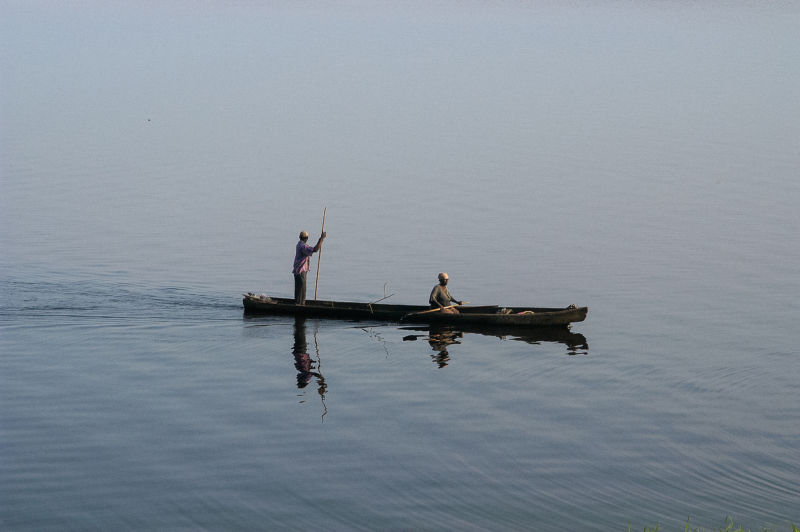
Over the past few decades, advances in DNA technology have completely changed our view of our species' past. We can now trace our ancestors out of Africa, into North America, and across the vastness of the Pacific. What often goes missing within this big picture of continual expansion is that our ancestors didn't sit still once they had settled an area. Technological changes like agriculture led to additional migrations and population disruptions.
One of the biggest of these is known as the Bantu expansion. There are over a billion people in Africa, and nearly a quarter of them speak languages from the Bantu family. Bantu speakers occupy regions from the rainforests of central Africa to the savannah of East Africa and dry climates of the south. And they occupied all of that territory in less than 4,000 years despite the fact that Africa had been teeming with humans for tens of thousands of years.
Now, researchers have turned to DNA to trace the route of the Bantu expansion across Africa. In the process, they've discovered that the Bantu ended up as part of the slave trade, contributing to the African American population as well.
Around Africa
Linguistic analysis and archeological evidence suggest that the Bantu originated near the border of Nigeria and Cameroon. Their initial expansion appears to have been driven by their development of agriculture, and they later widely adopted ironworking. But the geography around their region of origin—deserts to the north, savannah to the east, and rain forest to the south—would make agricultural practices challenging to move with. In fact, it has been difficult to determine which of the competing ideas about the Bantu's route(s) across Africa made sense.
To get a genetic perspective, a large team of researchers obtained DNA from over 1,300 Africans from 35 different populations in Africa. This DNA was checked for single-base differences that can help identify distinct populations.
The results suggest that the Bantu's first move was south and into the rainforest. Modern Bantu populations in the area have clearly intermingled with the hunter-gatherer groups that still live in the rainforest. But the traces of that population are absent in Bantu people elsewhere in Africa, suggesting it only occurred after the expansion. The DNA data's consistent with that, suggesting the hunter-gatherer DNA wasn't introduced in these populations until about 800 years ago.
From the rainforests of Angola, the population split into two distinct migrations. One swept east to Ethiopia and Somalia and intermingled with the populations there starting about 1500 years ago. About 10 percent of the DNA of Bantu speakers in the area comes from other East African populations. In the south, a separate group intermingled with the San, a population that currently occupies parts of Namibia. The San contributed about 20 percent of the DNA of modern Bantu speakers in South Africa.
Evolving in Africa
The data obtained by the research team also holds out the possibility of identifying the genes that were essential in allowing the Bantu to adapt to radically different environments. But, for the most part, the genes that came out of this analysis were exactly the sort of things we've seen in human populations elsewhere. In Bantu populations in east and west Africa, the biggest signal of evolutionary selection was in a cluster of genes that help the immune system identify pathogens (called the HLA complex).
In western Bantu speakers, the second biggest signal was found in a gene that's been implicated in mediating malarial resistance. In the east, the Bantu speakers came in contact with herding cultures, so there's a strong signal for selection at the gene that mediates lactose tolerance. In fact, it appears that lactose tolerance was introduced to Bantu speakers when they had kids with the pastoralist populations.
Oddly, nothing much—not even the HLA complex—stands out within the southern populations. The authors simply ascribe that to "a different demographic and adaptive history," but it's an odd result that probably deserves more attention.
Finally, the authors compared their data to what we know about Africans who experienced a forced relocation: the ones currently living in North America, who are mostly victims of the slave trade. African Americans typically inherit a genome that's about 75 to 80 percent of African origin. About 30 percent of that, the researchers found, originated near Angola, a core area of early Bantu expansion. As noted above, Bantu in this region have intermingled with populations of rainforest hunter-gatherers, and about four percent of their DNA also shows up in African Americans.
The new work sheds light on one of the largest migrations of humanity's past. One of the clearest messages from it is that we can adapt to things like agriculture and living in radically different environmental conditions without needing much in the way of genetic changes. We primarily adapt with our brains rather than our genes.
But the paper also makes clear how much we still have to learn about our past. Everywhere the Bantu speakers went, they ended up intermingling with pre-existing populations in the area. Each of those, like the Bantu, probably have a history of migration and interbreeding as well. We've only just begun to scratch the surface of our past within Africa.
Science , 2017. DOI: 10.1126/science.aal1988 ( About DOIs ).
reader comments
Channel ars technica.
- Where Are The Bantu People Found In Africa?
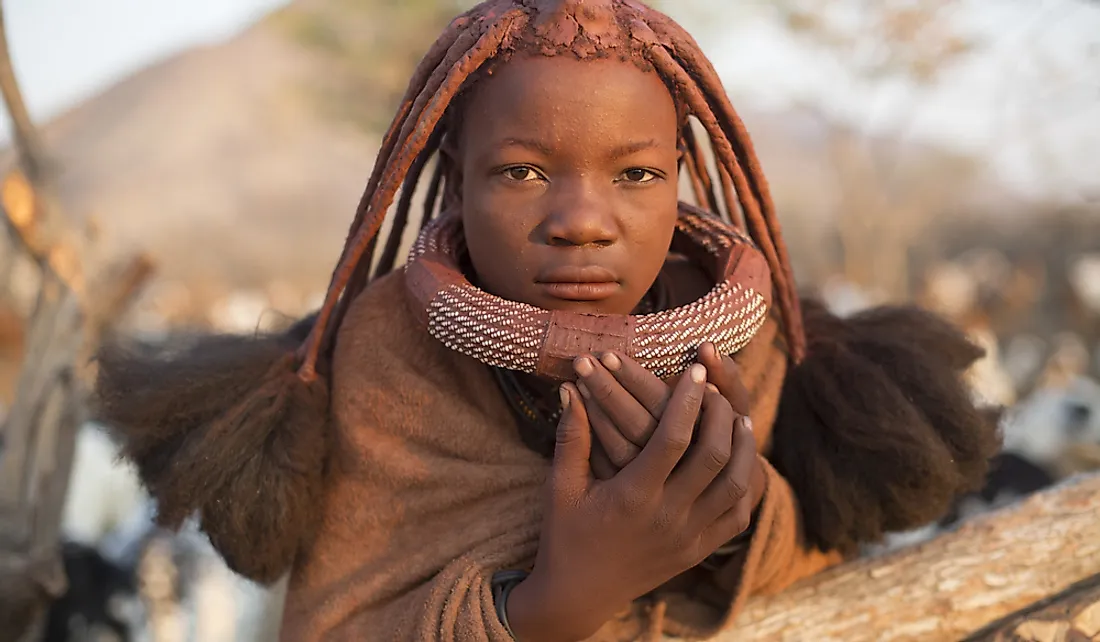
The Bantu speaking peoples comprise of over 400 different ethnic groups found in many countries in Central, East and Southern Africa . They are united by the Bantu language family and share many customs. There are between 440-680 distinct Bantu languages, comprising about 350 million speakers. This represents 30% of the African population. The Bantu-speaking peoples are thought to have originated from West Africa about 4000 years ago where they spread across the rest of the continent. The exact reason as to why they migrated from their cradle land is subject for consensus. Today, the Bantu-speaking peoples are found in many sub-Saharan countries such as Congo, Rwanda, Tanzania, Kenya, Uganda, Zimbabwe, Angola, South Africa, Malawi, Zambia, and Burundi among other countries in the Great Lakes region.

Origins of the Bantu People
Over 4,000 years ago, the Bantu speaking people migrated from West Africa in several major waves of migration. First, they moved east, north of the tropical rainforest in the region near north of East Africa . They then migrated south to the central highlands of Africa in what is believed to have been the third wave of migration. Finally, they moved southwards to occupy Southern Africa regions which led to the displacement of indigenous communities of Khoisan people . In the process of displacement and settlement, there was ethnic and linguistic mixing.
The southern group of Bantus later divided into two main groups namely: the Nguni and Sotho-Tswana. It is very easy to distinguish between the two groups as the Nguni languages (Xhosa, Ndebele, Swazi, and Zulu) have a distinctive click while the Sotho-Tswana does not.
Expansion of the Bantu People
Even though many reasons for the expansion remain inconclusive, the Bantu speaking people are believed to have migrated because of their agricultural lifestyle especially with the discovery of yams and bananas. The linguistic core of the Bantu language can be traced from the Nigeria and Cameroon region. From this, the expansion began about 3000 years ago to East Africa while other streams to the south via coastal regions. The expansion is believed to have reached South Africa in 300 BCE.
Impact of the Spread of Bantu Peoples in Africa
The expansion of Bantu people consequently resulted in the adoption of agriculture by many cultures that they came in contact with. More often, the Bantu dominated every region they came to and displaced other communities to land that was not suitable for agriculture. Relatively powerful Bantu-speaking states emerged between the 13th and 15th century as a result of the continuous migration and settlement. Normally, they were powerful than the local chiefdoms. Such states were widespread in the Great Lakes region, Central African forest and along the Zambezi River .
Contemporary Bantu Peoples
Currently, the Bantu speaking people are found in over 27 countries including Angola, Botswana, Burundi, Cameroon, CAR, Comoros, Congo, DRC, Equatorial Guinea, Gabon, Kenya, Lesotho, Madagascar, Malawi, Mayotte, Mozambique, Namibia, Nigeria, Rwanda, Somalia, South Africa, Sudan, Swaziland, Tanzania, and Uganda. Individual ethnic groups include the Zulu of South Africa, Kikuyu, Kamba, and Luhya of Kenya, Buganda of Uganda, Shona of Zimbabwe, Luba of Democratic Republic of Congo, and Hutu of Rwanda.
- World Facts
More in World Facts

The Largest Countries In Asia By Area

The World's Oldest Civilizations

Is England Part of Europe?

Olympic Games History

Southeast Asian Countries

How Many Countries Are There In Oceania?

Is Australia A Country Or A Continent?

Is Turkey In Europe Or Asia?

Email us at [email protected]
- Celebrating 10 Years of Visa Consultancy ,Tours and Travel Services
Visa Consultancy
Bantu Africa Travel has been carrying out Visa Consulting for the last 10 years, with our vast experience and experienced consultants, we find solutions to your dream destination countries like USA, Canada, UK, Australia etc. We have helped around 1000 Individuals to settle in their dream countries
A Whole World On A Single Island
Tour categories.
Bantu Africa Travel offers Gorilla Trekking Safaris, Primates Safaris Wildlife Tours in Uganda and throughout East and Central Africa
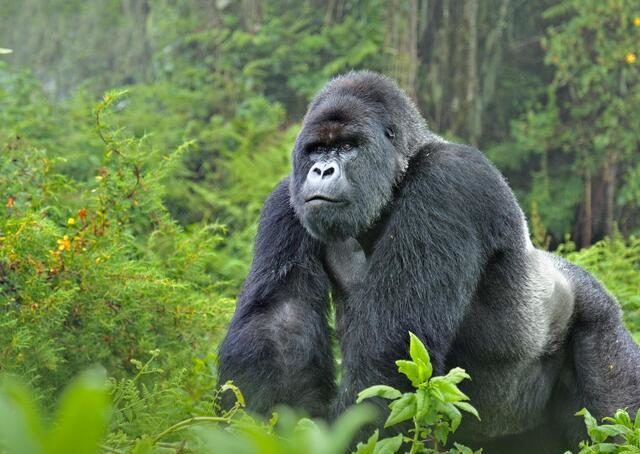
Gorilla Safaris
We offer gorilla safaris and wildlife in Uganda visiting most of the Uganda National Parks like Bwindi & Mgahinga
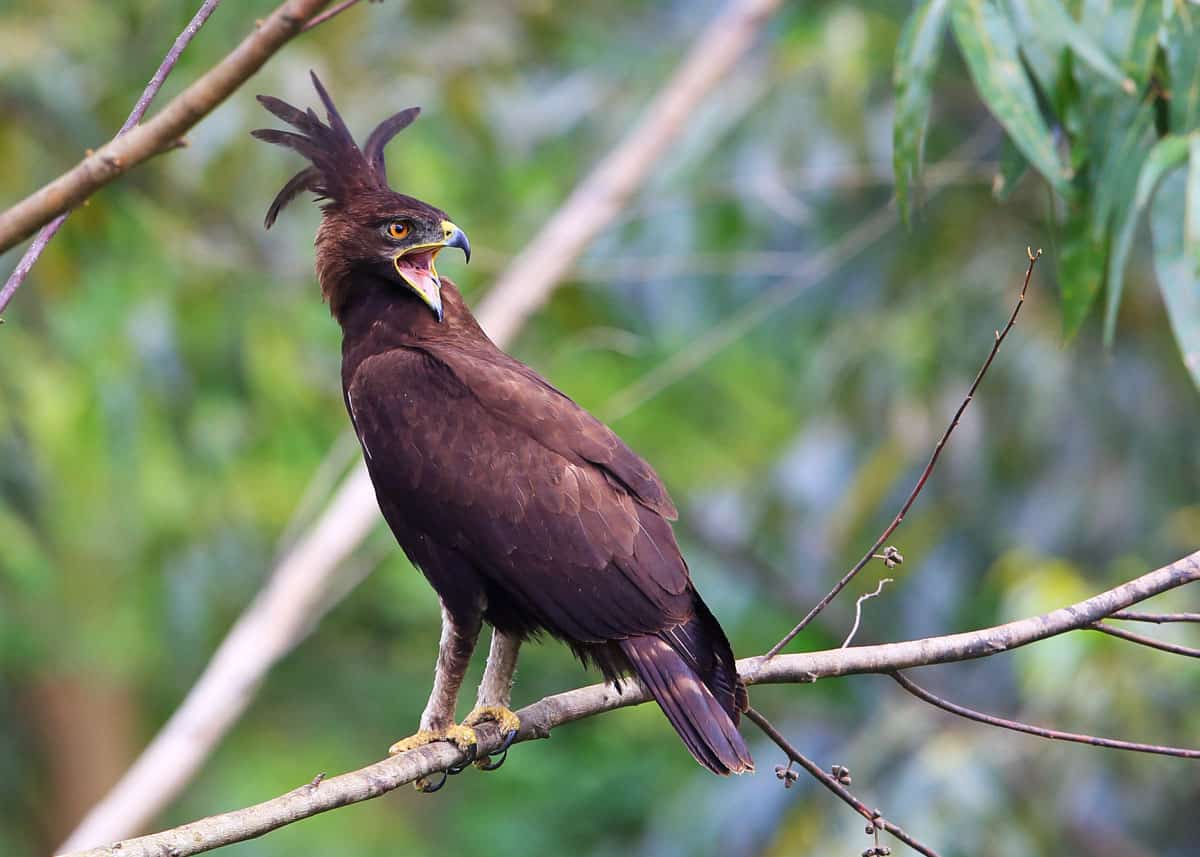
Birding Tours
We offer Uganda birding tours in both categories, short and long tours to different Uganda’s important bird areas
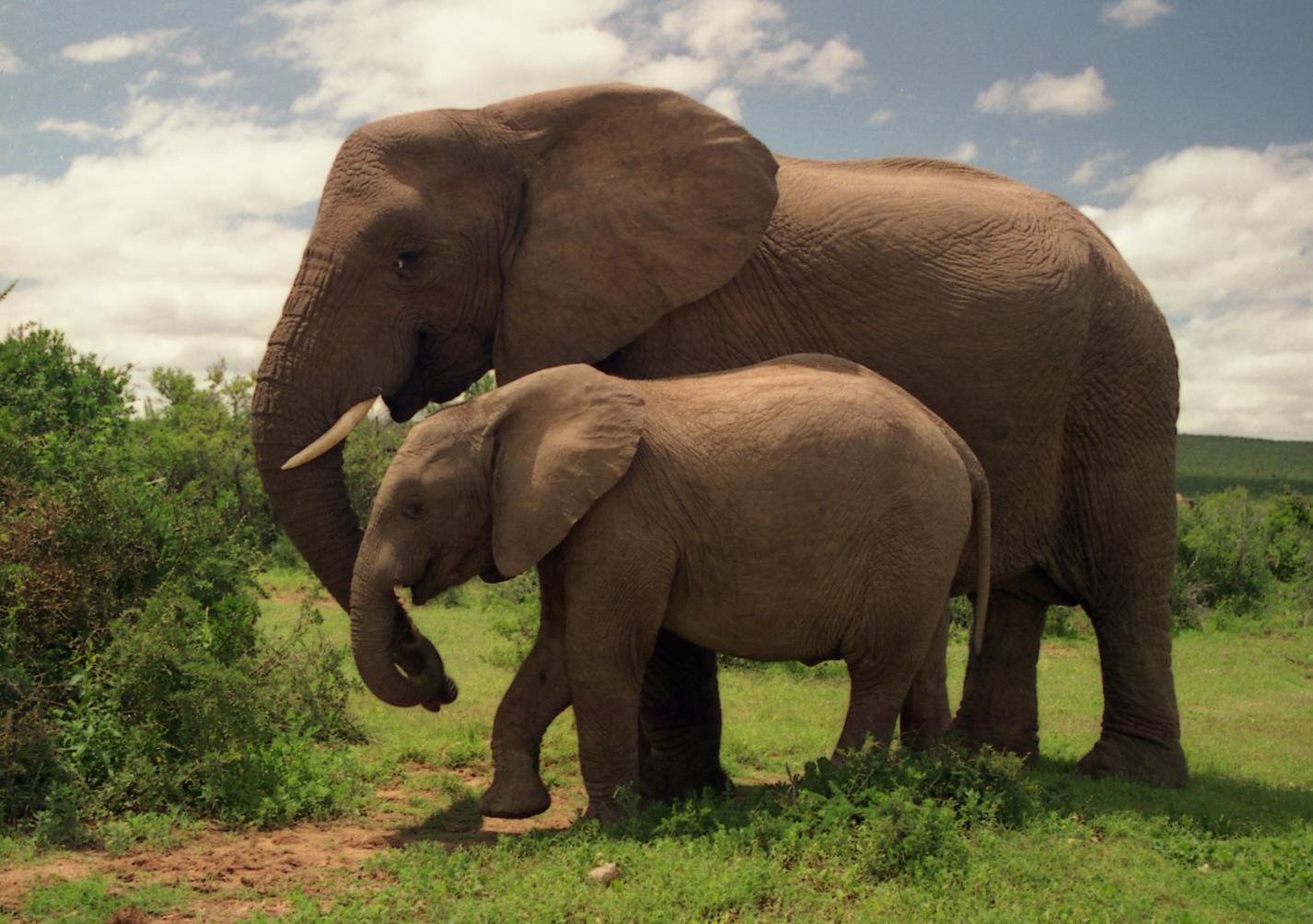
Wild Life Tours
We offer short and long wildlife safaris in Uganda to different sites or national parks which habit variety of wildlife species
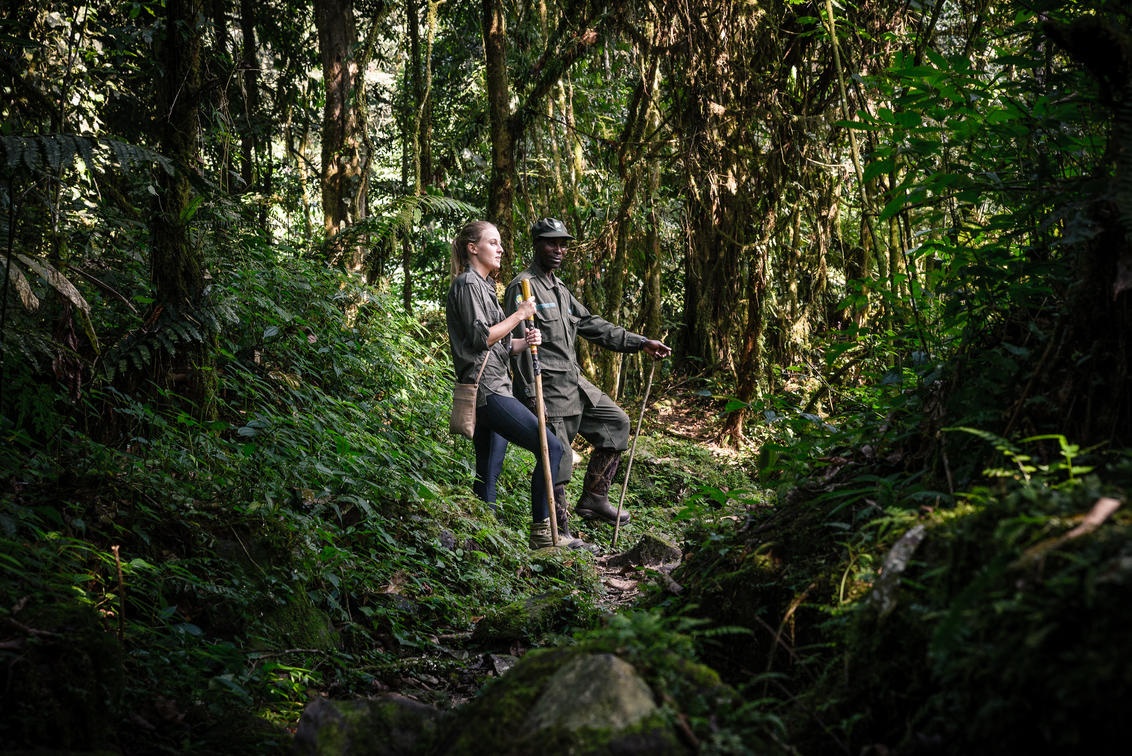
Nature Walks
We offer mountain trekking tours to adventure tourists, these expeditions can be done in Uganda, Congo & Rwanda.
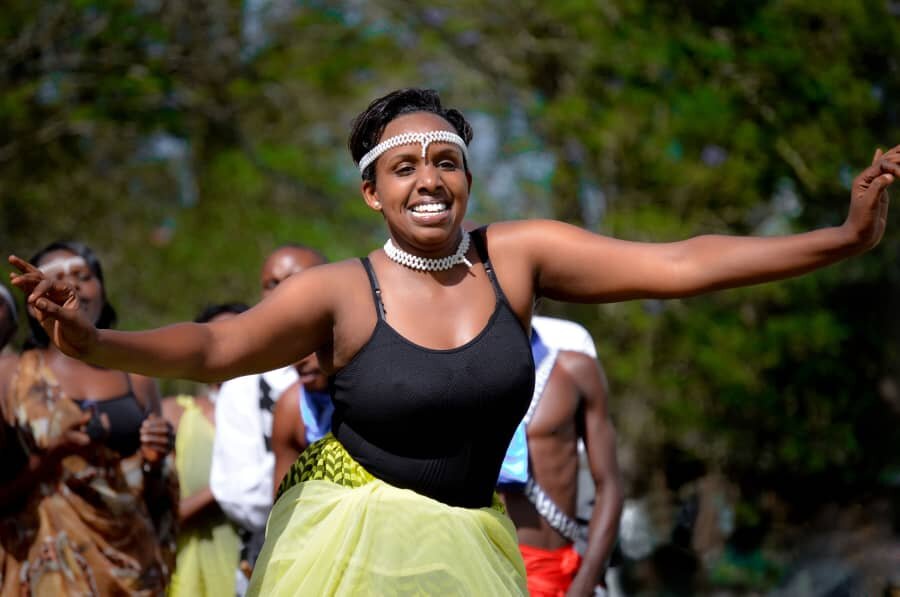
Cultural Tours
Bantu Africa Travel and Safaris offers cultural tours of different culture in Uganda and the rest of Africa

We will arrange for camping for tourists who would like to move in Groups in forests like Mabira and Budongo.
Our Areas of Practice
We’ll hire for you all types of cars at cheap and affordable prices. Prices depend on the period being taken, Don’t miss a chance to experience one of our best services.
Hotel Bookings
Our Hotels with spacious interiors exterior, architectural integrity and exclusive finishes built with exceptionally high aeration and construction standards is what you’ll expect when you book with us
Visa Processing
One of the biggest concerns for everyone when they apply for a visa, is the timeframe in which they can actually get their visa. At Bantu Africa Travel we’ll answer all your questions concerning Visa
Chartered Flights
Our travel team will book for you luxurious flights depending on your requirements and to every destination of the world except destinations with countries with sanctions.
Spend your big day or honeymoon with Bantu Safaris , one of the most romantic and adventurous experiences. Imagine waking up on your wedding day to the warm African sunrise
Air Ticketing
With a wealth of over 5 years travel experience and courteous, efficient and reliable personnel we will always ensure to offer you the various fare options that suit your requirements

Our Partners

Ready to get answers from our qualified Tour Consultant
Call: +256 393 225505, call: +256 704 812821.

IMAGES
VIDEO
COMMENTS
The Bantu Migration from their origins in southern West Africa saw a gradual population movement sweep through the central, eastern, and southern parts of the continent starting in the mid-2nd millennium BCE and finally ending before 1500 CE. With them, the Bantu brought new technologies and skills such as cultivating high-yield crops and iron-working which produced more efficient tools and ...
Bantu Languages: Connecting Culture and Travel in Africa The cradle of human civilization, Africa, is a continent characterized by its rich linguistic tapestry. One of the most remarkable threads in this intricate fabric is the Bantu language family that is used across Africa's diverse countries.
The Bantu expansion was [3] [4] [5] a major series of migrations of the original Proto-Bantu -speaking group, [6] [7] which spread from an original nucleus around West - Central Africa. In the process, the Proto-Bantu-speaking settlers displaced, eliminated or absorbed pre-existing hunter-gatherer and pastoralist groups that they encountered.
The Bantu peoples are an ethnolinguistic grouping of approximately 400 distinct native African ethnic groups who speak Bantu languages.The languages are native to 24 countries spread over a vast area from Central Africa to Southeast Africa and into Southern Africa.. There are several hundred Bantu languages. Depending on the definition of "language" or "dialect", it is estimated that there are ...
Bantu peoples, the approximately 85 million speakers of the more than 500 distinct languages of the Bantu subgroup of the Niger-Congo language family, occupying almost the entire southern projection of the African continent. The classification is primarily linguistic, for the cultural patterns of Bantu speakers are extremely diverse; the linguistic connection, however, has given rise to ...
By Madison Moulton. The Bantu Expansion - the migration of Bantu-speaking people across the African continent - is one of Ancient history's largest migrations. Beginning around 1500BCE, members of the proto-Bantu language group migrated eastward and southward from West Africa, crossing vast swathes of the continent over hundreds of years.
Summary. The Bantu Expansion stands for the concurrent dispersal of Bantu languages and Bantu-speaking people from an ancestral homeland situated in the Grassfields region in the borderland between current-day Nigeria and Cameroon. During their initial migration across most of Central, Eastern, and Southern Africa, which took place between ...
The Bantu expansion is the name for a postulated millennia-long series of migrations of speakers of the original proto-Bantu language group. The primary evidence for this expansion has been linguistic, namely that the languages spoken in sub-Equatorial Africa are remarkably similar to each other. It seems likely that the expansion of the Bantu ...
One of the biggest of these is known as the Bantu expansion. There are over a billion people in Africa, and nearly a quarter of them speak languages from the Bantu family. Bantu speakers occupy ...
Researchers have found ways to trace the movement of Bantu-speaking peoples that began possibly as early as 2000 BCE. Evidence suggests that they moved rapidly across the continent, south and east, sometime between 2000 BCE and 1000 CE. By about 1200 CE, "Bantu-ness" was a cultural and technological network across the vast trunk of Africa.
The Bantu dispersal across sub-Saharan Africa had a profound impact on the continent's culture, language, history, and education. The migration of the Bantu people influenced the formation of diverse societies, the spread of Bantu languages, the development of political entities, and the transmission of knowledge, leaving a lasting legacy on African heritage and contributions to the world.
Bantu tribes stopped their migrations in the areas of Zimbabwe and _____. South Africa. Kumbi Saleh was defeated after a lengthy battle by the _____. Almoravids. Kumbi Saleh traded primarily in _____. gold and salt. The capital of the Ghana Empire was _____. Kumbi Saleh. Study with Quizlet and memorize flashcards containing terms like clan ...
The Bantu are said to have originated from somewhere in the Congo region of central Africa and spread rapidly to the Southern and eastern Africa. (Today, more than one half of the population of Uganda are Bantu.) There are several groups speaking different Bantu Languages. Bantu are said to have settled in Uganda between A.D. 1000 and A.D. 1300.
The Bantu expansion is the name for a postulated millennia-long series of migrations of speakers of the original proto-Bantu language group. The primary evidence for this expansion has been linguistic, namely that the languages spoken in sub-Equatorial Africa are remarkably similar to each other. It seems likely that the expansion of the Bantu ...
The linguistic core of the Bantu language can be traced from the Nigeria and Cameroon region. From this, the expansion began about 3000 years ago to East Africa while other streams to the south via coastal regions. The expansion is believed to have reached South Africa in 300 BCE. Impact of the Spread of Bantu Peoples in Africa
The Bantu expansion is a major series of migrations of the original proto-Bantu language speaking group, who spread from an original nucleus around West Africa - Central Africa across much of sub-Sahara Africa. In the process, the Proto-Bantu-speaking settlers displaced or absorbed pre-existing hunter-gatherer and pastoralist groups that they ...
Bantu Africa Travel has been carrying out Visa Consulting for the last 10 years, with our vast experience and experienced consultants, we find solutions to your dream destination countries like USA, Canada, UK, Australia etc. We have helped around 1000 Individuals to settle in their dream countries.
Journal information: Nature. About 350 million people across Africa speak one or more of the 500 Bantu languages. New genetic analysis of modern and ancient individuals suggests that these ...
Founded In 2012 as Valse tours and travel, rebranded as Bantu African Travel in 2018 setting itself as a licensed travel and tour agency.We at Bantu African Travel are passionate about Uganda and it is our privilege to introduce you to the Pearl of Africa. With over 8 years in the business and hundreds of completed projects, we have grown from ...
Bantu Africa Travel - U Ltd, Kampala, Uganda. 2,287 likes · 19 talking about this · 39 were here. We provide luxury, Moderate and bugdet wildlife safaris,tour activities like hotel bookings,Air... Bantu Africa Travel - U Ltd, Kampala, Uganda. 2,287 likes · 19 talking about this · 39 were here. ...
With cool rainy winters and hot dry summers, Bantu crops dependable elsewhere failed them. Below a line of latitude spanning the continent from Nigeria et al.'s Bight of Biafra to the Kenyan coastlands, by 1000 AD, only the Khoekhoe's rangelands and the San's deserts eluded Bantu domination of the entire continent's span coast to coast.
Skip to main content. Discover. Trips
Restaurants near Travel Africa - Bantu: (0.30 km) Dusty Road Township Experience (1.56 km) Livingstone Room at Victoria Falls Hotel (1.61 km) Stanley's Terrace (1.80 km) The Cassia Restaurant (1.57 km) The Three Monkeys; View all restaurants near Travel Africa - Bantu on Tripadvisor